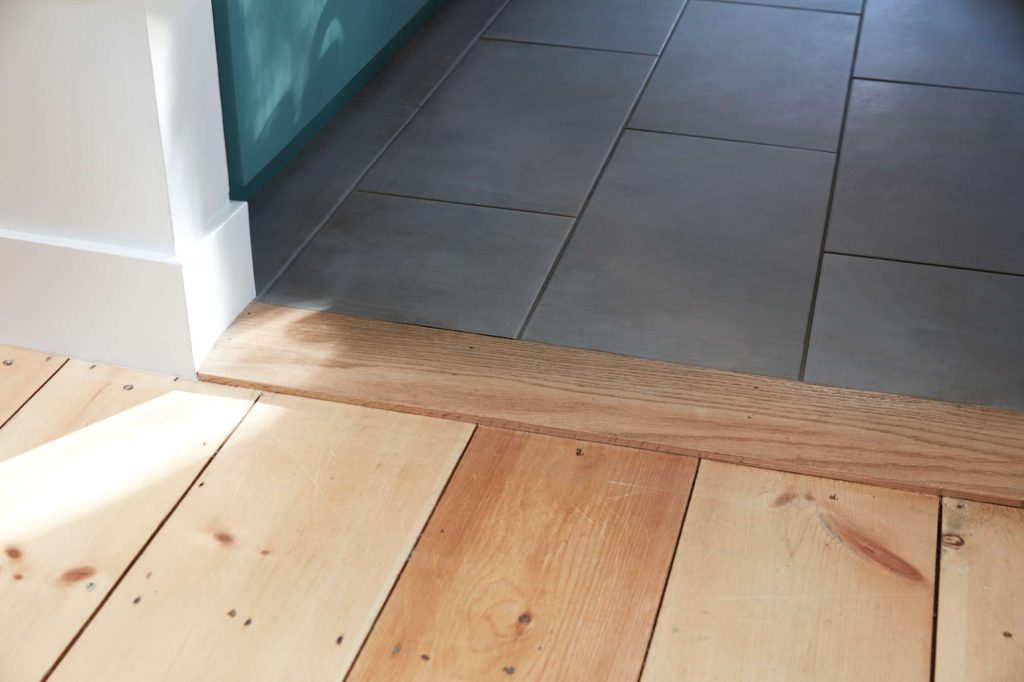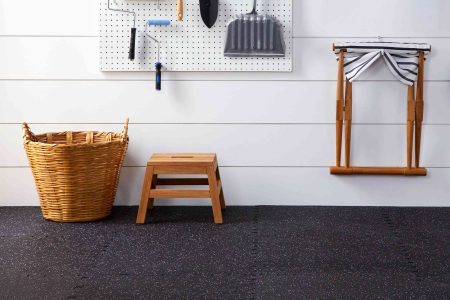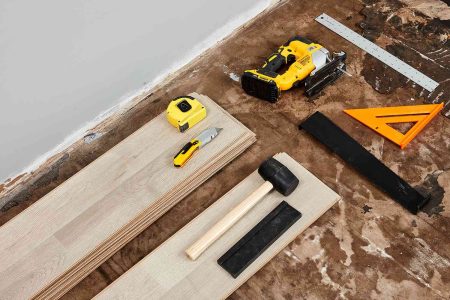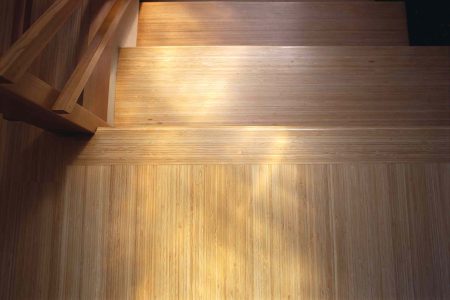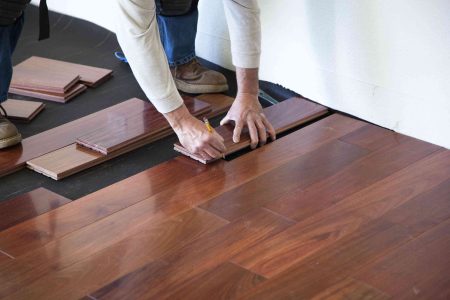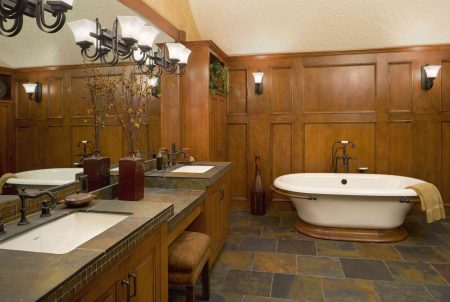When you install a tile floor next to a wood floor, there is usually a difference in height. Instead of expensively raising or lowering one of the floors, the solution is to use a transition strip between the wood and the tile.
What Transition Strips Are
A transition strip is a piece of metal, wood, or plastic that covers the gap between two dissimilar floor coverings and which acts as a type of ramp from a higher to a lower floor.
Ideally, floor coverings continue from room to room throughout the house with no interruptions or gaps. In this perfect world, one floor is installed all at once and it works for all areas.
But that’s not how most homes work. Floors are often installed piecemeal over the years. Hardwood might be installed in the living room because wood is beautiful and warm underfoot.
In the bathroom and kitchen, ceramic or porcelain tile might be installed since tile is durable and moisture-resistant.
Outside of function, different types of floors might be installed simply for aesthetic reasons. With a patchwork of different floor coverings come different heights—in so many cases, you will need a transitional device because the tile floor often is higher than the adjoining wood flooring.
Why Tile Has Height Issues
Whether composed of porcelain or ceramic tile, marble, granite, or of another material, tile flooring requires a number of substrate layers for installation. These layers are not dimensionally analogous to the layers found in non-tile applications.
Tile flooring requires a mortar bed. A good, professional tiler can maintain a nearly uniform thickness. If the tile was installed by a do-it-yourselfer with little experience, tile heights might vary. Wood flooring (including laminate flooring) is more predictable. Subflooring, underlayment, and the wood flooring itself all contribute to making a single-height surface.
How Transition Strips Work
The answer to height differences is to use a floor transition strip that ramps up or down from tile flooring to wood flooring. Transition strips, typically made of wood or lightweight aluminum, can easily be cut to length with a regular miter saw or hacksaw. Usually quite inexpensive, surface transition strip installation requires little more than a hammer or drill, nails or screws, and a saw.
One important installation note: beware of accidentally striking any part of the transition strip other than the nail. These aluminum strips dent easily, and these dents will distort the strips and thus prevent them from laying seamlessly on the floor. The only solution to a distorted transition strip is to buy a new one.
Pros and Cons
-
Easy fix for height difference
-
Quick installation
-
Neutral transition material
-
Edge of strip can cause trips and falls
-
Noise when walking on strip
-
Doesn’t match with floor on either side
Transition strips are the very definition of an easy fix. Instead of agonizing over adjusting the entire height of one of the adjoining floors, you can put in a transition strip and have floors that ramp up or down as needed.
Installation takes less than half an hour for most strips and a few installations can be accomplished in about fifteen minutes.
Transition strips are a neutral material; meaning, it’s neither the tile nor the wood flooring. Unless you happen to have a matching wood transition that is exactly the same species of wood and stain as the wood flooring, it’s best to have a neutral material in the middle.
No matter how well-installed, the lip on surface transition strips may eventually catch on something such as a shoe or toy, causing it to gradually loosen. Metal transition strips have a lower profile, but their downside is that they create a quite noticeable clack when walked on.
Wood transition strips look good when matched up with a similar type of wood flooring. But when the wood is too dissimilar, their appearance can be jarring. Also, higher-profile transition strips tend to wear down faster and show damage.
Full Saddle vs. Half Saddle Transitions
A full saddle transition is meant for bridging between two levels that are the same. A half-saddle transition strip is designed for flooring where one level is higher than the adjacent level.
If you do have matching levels, you can butt the tile up against the wood, for a flooring change that is free of a transition strip. But there will still be a small gap. Because gaps are known dust-collectors, you may want to cover it with a strip, if only to avoid the dust problem.
Flush Transitions
Better functioning and more attractive, but more difficult to install, are flush tile transition strips. Unlike the surface strips, flush-mount strips take many different forms and even lend themselves to improvisation.
Flush transitions can only be installed when both flooring surfaces have straight, parallel edges. By contrast, surface tile transitions are more forgiving, because they can cover up irregular, ragged edges.
Hardwood Transition Strips
This is a single transition strip that acts as a ramp from the lower hardwood floor to the higher tile floor. This strip can either meet the tile floor directly or can have a lip-over style.
Stone-to-Hardwood Transition Strips
A marble or granite strip that abuts the tile floor, this transition strip then adjoins the lower floor with a hardwood trim piece.
Read the full article here



